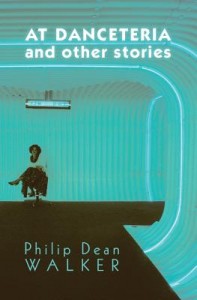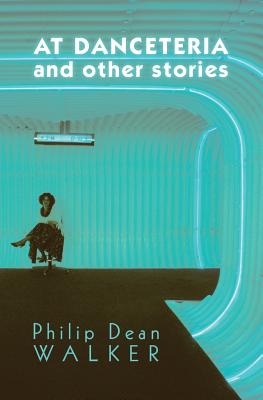 At Danceteria and Other Stories
At Danceteria and Other Stories
by Philip Dean Walker
Squares and Rebels. 91 pages, $15.
PHILIP DEAN WALKER’S debut collection At Danceteria and Other Stories can be read in two ways. Each story can be appreciated individually as a reverent elegy to the gay party scene of the 80’s—its fashion, social structure, and noisy glamour—or they can be read together, perhaps in one sitting, and the book becomes a haunting descent from the intoxication of that era into the unfolding awareness of AIDS as the new normal.
Less linear than historical fiction in the main, this historical “re-fiction” is the product of extensive research and an expansive imagination. The first story in the collection, “By Halston,” starts with a singular historical moment: designer Halston, Studio 54 founder Steve Rubell, Liza Minnelli, and Andy Warhol are attending the opening of what became Halston’s eponymous JC Penney collection (later discontinued). We soon find ourselves at Studio 54 in a haze of pulsating music, mirrored walls, booze, and drugs, watching Truman Capote dance with a shirtless Italian man. However, the storytelling is far from unhinged. Walker’s thorough research and loyalty to detail enable him to recreate the singular moments, both real and imagined, that exemplify an era, told in a vivid language and dialog that is at once alarming and completely natural.
Throughout the book, Walker elaborates upon the relationships among the legendary gay men in the stories and their relationships with extravagant women: Liza and Halston sharing the last line of coke in the DJ booth at Studio 54; Keith Haring decorating a white wall with a black Sharpie while Madonna plays onstage; Rock Hudson posing with his good friend Nancy Reagan at the White House; Jackie O. and the handyman of Grey Gardens, Jerry Torre, at the Anvil. In “Don’t Stop Me Now,” we tag along with Freddie Mercury and Princess Diana, dressed as an eccentric male model for the night, en route to a gay bar in London. Replete with pomade-slicked-back hair, tight jeans and aviator glasses, Diana is ushered by Freddie to a seat at the bar, where she orders a glass of white wine and watches a Diana drag queen imitate her famous wave as the room chants “We love you Princess Di!”
Unfolding like a mystery throughout the collection is the reality of AIDS and its effect upon a community that continues to party on, even as death and mourning are starting to enter the picture and ultimately take over Walker’s storyline. Near the middle of the book, “The Boy Who Lived Next to the Boy Next Door” departs from his formula of starting with a nostalgic retelling of the glamour of the era and dives right into the unfolding plague, which early on was called “hot guy flu” in some circles. The narrator explains that the “Hot Guys” were the first to get sick, because they had received the most attention and had the most sex. The narrator here is so humble, so painfully self-aware, that we’re inclined to trust his perceptions. In this intimate story, he recounts the time he was hit on by one of the remaining healthy Hot Guys, a man he’d admired from afar for years. Far be it from the average-looking narrator to turn down such an offer. But when he looks up during their sexual encounter to make eye contact, he finds Hot Guy caught up in his own narcissistic reverie, and the moment of bliss is shattered. Soon after, when a particularly unattractive man is diagnosed with AIDS, he realizes that “the disease was not discriminating against anyone.”
When Walker’s voice peeks out, his personal reverence for this time in history as a 38-year-old gay man in 2017 is striking and refreshing. At one point in Studio 54, Halston is surrounded by mirrors, some fading and cracked from time. “He imagines what it must have been like to enter the club back when it was an opera house in the Roaring Twenties, a period by which he has always been fascinated, slightly jealous that he could not have lived then instead. He can feel the ghosts of past patrons staring back at him, superimposing their faces over his reflection … reflecting back to him the optimism of another time.”
Emily Natasha Voorhees is a writer and Pilates instructor in Brooklyn.






